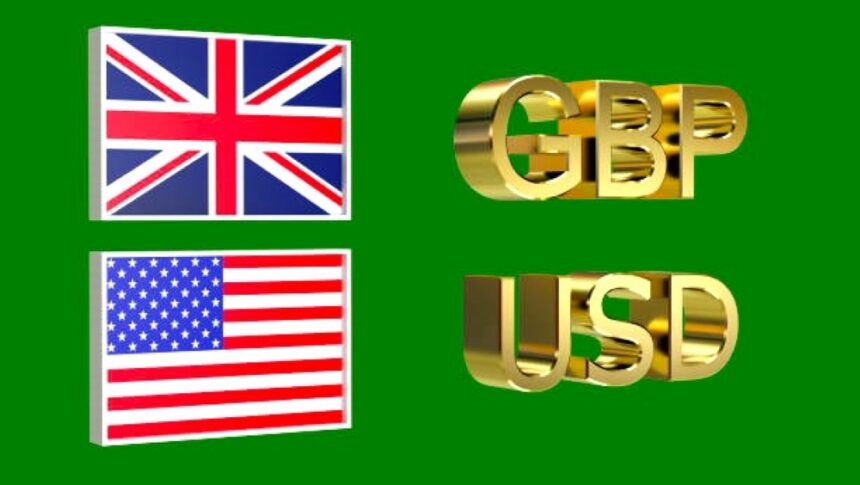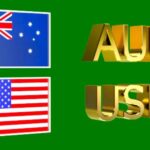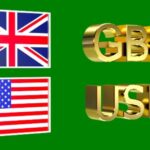Pound Strengthens as USD Falters.
The Pound Sterling (GBP) has witnessed a significant surge, climbing toward the key resistance level of 1.2700 against the US Dollar (USD) during European trading hours on Monday. This upward momentum primarily driven by a weaker USD, which is under pressure following disappointing US services sector data for February. The unexpected contraction in the US Services Purchasing Managers Index (PMI) has heightened speculation about potential interest rate cuts by the Federal Reserve (Fed) as early as June. Consequently, the US Dollar Index (DXY), which measures the USD’s performance against a basket of major currencies, has plummeted to approximately 106.10, marking its lowest level in nearly 12 weeks.
The recent downturn in US business activity data suggests mounting economic concerns, particularly in the services sector, which had been a resilient component of the economy. This development has prompted market participants to reassess their expectations regarding the Fed’s monetary policy trajectory. Meanwhile, in the United Kingdom (UK), economic indicators such as retail sales, inflation data, and wage growth have contributed to growing investor confidence in the British currency.
Impact of US Services PMI on the Dollar’s Performance
On Friday, the preliminary S&P Global PMI report revealed a notable slowdown in business activity across the United States. The Composite PMI, which combines manufacturing and services data, edged lower to 50.4 in February, down from 52.7 in January. The most alarming aspect of the report was the Services PMI, which unexpectedly dropped to 49.7 from a previous reading of 52.9. This contraction marks the first time in over two years that the services sector has fallen below the critical 50 threshold, indicating a decline in activity.
Economists had anticipated a slightly stronger expansion, with forecasts predicting a rise to 53.0. However, the unexpected downturn in services sector performance has been attributed to multiple factors, including increased political uncertainty and concerns over federal spending cuts. According to the report, many service providers have expressed apprehension regarding future economic conditions, particularly with respect to inflation and policy decisions.
As a result of this weak services data, traders have adjusted their Fed rate expectations. The CME FedWatch Tool now indicates that the probability of interest rates remaining unchanged at the current 4.25%-4.50% range has dropped to 41.1%, down from nearly 50% before the PMI data release. This shift underscores growing market speculation that the Fed might be compelled to introduce rate cuts to sustain economic stability.
Manufacturing Sector Shows Signs of Resilience
While the services sector struggles, the US manufacturing industry has displayed relative resilience. The Manufacturing PMI for February came in at 51.6, surpassing both market expectations of 51.5 and the previous reading of 51.2. This positive performance suggests that manufacturing activity is benefiting from recent trade policies and economic measures.
Analysts point to the influence of US President Donald Trump’s tariff agenda, which aims to bolster domestic production by imposing restrictions on imports. Trump has previously stated that his policies are designed to revitalize American manufacturing and reduce reliance on foreign goods. The latest data appears to support this narrative, as manufacturing output continues to expand despite broader economic uncertainties.
Market Outlook: Key Economic Events to Watch This Week
Looking ahead, investors will closely monitor several crucial economic reports this week. Two major indicators—US Durable Goods Orders and the Personal Consumption Expenditures (PCE) Price Index—are set to be released on Thursday and Friday, respectively. These data points will provide further insights into the overall health of the US economy and influence market expectations regarding future monetary policy decisions.
The PCE Price Index, in particular, is the Fed’s preferred measure of inflation. A higher-than-expected reading could dampen hopes for aggressive rate cuts, whereas a weaker figure may reinforce expectations for monetary easing. Similarly, Durable Goods Orders will offer a glimpse into consumer and business investment trends, shedding light on economic confidence and spending behavior.
Pound Sterling’s Strength Amid BoE’s Cautious Approach
The Pound Sterling has outperformed its major counterparts at the beginning of the week, benefiting from speculation that the Bank of England (BoE) will adopt a measured approach to monetary easing. Unlike the Fed, which faces increasing pressure to cut rates, the BoE appears to be moving at a slower pace in its policy adjustments.
Several key economic indicators have contributed to the GBP’s recent strength:
Retail Sales Growth: UK retail sales data for January exceeded expectations, reflecting robust consumer demand.
Higher Inflation: The latest Consumer Price Index (CPI) report showed inflation remained elevated, prompting traders to scale back expectations for aggressive rate cuts.
Strong Wage Growth: Wage data for the three months ending in December revealed solid growth, further supporting a cautious monetary policy stance.
BoE Rate Cut Expectations: What Analysts Predict
Despite these positive economic signals, markets still anticipate additional rate cuts from the BoE this year. Current money market expectations suggest that the central bank will implement two more rate reductions before year-end. The BoE recently lowered its key borrowing rate by 25 basis points to 4.5% during its latest policy meeting, signaling the beginning of a gradual easing cycle.
However, not all analysts agree on the BoE’s approach. TD Securities, for example, predicts that the central bank may need to cut rates four more times in 2025, particularly if external risks—such as the potential impact of US tariffs on global trade—materialize. Interestingly, TD Securities has adjusted its forecast, now expecting the next BoE rate cut in May instead of March, given the recent resilience of UK economic data.
Speeches from BoE Policymakers in Focus
In addition to economic data releases, market participants will be paying close attention to upcoming speeches from BoE officials. Several key policymakers, including Clare Lombardelli, Swati Dhingra, and Deputy Governor Dave Ramsden, are scheduled to speak on Monday. Their statements could provide fresh insights into the central bank’s outlook on inflation, interest rates, and economic growth.
Conclusion: GBPUSD Outlook and Key Takeaways
The GBPUSD currency pair has gained momentum as investors react to diverging economic conditions in the UK and US. While the Fed faces mounting pressure to introduce rate cuts due to weakening services sector activity, the BoE appears to be navigating a more cautious easing cycle.
Key factors influencing the pound outlook include:
1. Weak US Services PMI: The surprise contraction has fueled speculation of earlier-than-expected Fed rate cuts.
2. Resilient UK Economic Data: Strong retail sales, inflation, and wage growth have tempered expectations for aggressive BoE rate cuts.
3. Upcoming Economic Reports: The release of US Durable Goods Orders and the PCE Price Index this week will shape market sentiment.
4. BoE Policymaker Speeches: Comments from central bank officials could influence GBP’s trajectory in the coming days.
As market conditions evolve, traders and investors will continue to assess economic indicators and policy decisions to determine the next moves in the pound pair. The coming weeks will be critical in shaping the broader currency market landscape, with potential rate adjustments by both the Fed and BoE playing a central role in driving price movements.








